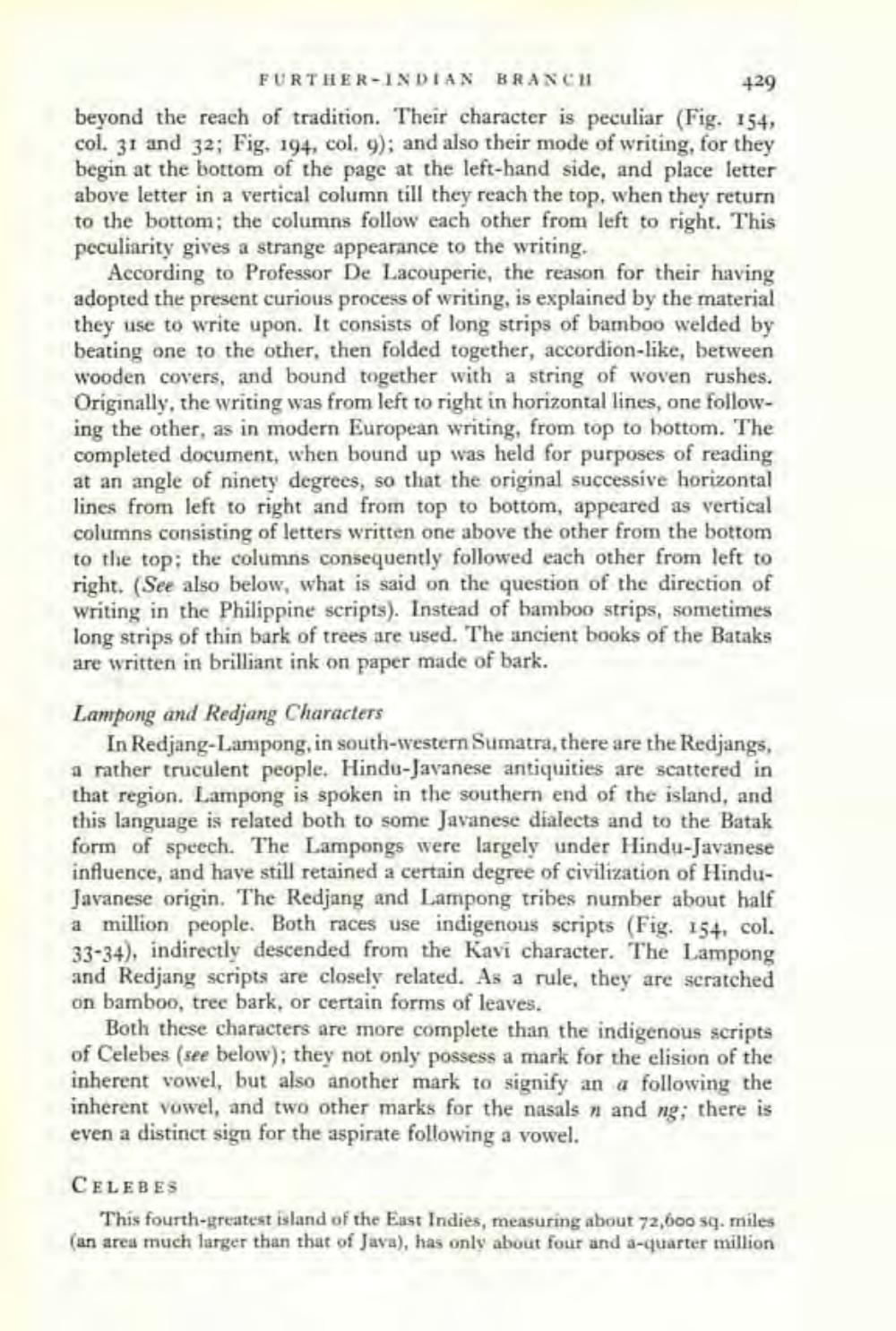________________
FURTHER-INDIAN BRANCH
+29 beyond the reach of tradition. Their character is peculiar (Fig. 154, col. 31 and 32; Fig. 194, col. 9); and also their mode of writing, for they begin at the bottom of the page at the left-hand side, and place letter above letter in a vertical column till they reach the top, when they return to the bottom; the columns follow each other from left to right. This peculiarity gives a strange appearance to the writing.
According to Professor De Lacouperie, the reason for their having adopted the present curious process of writing, is explained by the material they use to write upon. It consists of long strips of bamboo welded by beating one to the other, then folded together, accordion-like, between wooden covers, and bound together with a string of woven rushes. Originally, the writing was from left to right in horizontal lines, one following the other, as in modern European writing, from top to bottom. The completed document, when bound up was held for purposes of reading at an angle of ninety degrees, so that the original successive horizontal lines from left to right and from top to bottom, appeared as vertical columns consisting of letters written one above the other from the bottom to the top; the columns consequently followed each other from left to right. (See also below, what is said on the question of the direction of writing in the Philippine scripts). Instead of bamboo strips, sometimes long strips of thin bark of trees are used. The ancient books of the Bataks are written in brilliant ink on paper made of bark.
Lampong and Redjang Characters
In Redjang-Lampong, in south-western Sumatra, there are the Redjangs. a rather truculent people. Hindu-Javanese antiquities are scattered in that region. Lampong is spoken in the southern end of the island, and this language is related both to some Javanese dialects and to the Batak form of speech. The Lampongs were largely under Hindu-Javanese influence, and have still retained a certain degree of civilization of HinduJavanese origin. The Redjung and Lampong tribes number about half a million people. Both races use indigenous scripts (Fig. 154. col. 33-34), indirectly descended from the Kaví character. The Lampong and Redjang scripts are closely related. As a rule, they are scratched on bamboo, tree bark, or certain forms of leaves.
Both these characters are more complete than the indigenous scripts of Celebes (see below); they not only possess a mark for the elision of the inherent vowel, but also another mark to signify an a following the inherent vowel, and two other marks for the nasals n and ng; there is even a distinct sign for the aspirate following a vowel.
CELEBES
This fourth-greatest island of the East Indies, measuring about 72,600 sq. miles (an area much larger than that of Java), has only about four and a-quarter million




